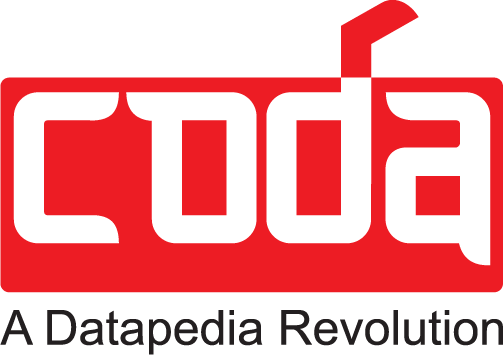The Far East is a global powerhouse in mining, refining, and distributing a wide range of metals and minerals. From rare earth elements in China to refined nickel in Indonesia, the region is a crucial node in the global supply chain. Yet, behind the scenes, inventory inefficiencies silently erode margins and disrupt operations.
Many companies in the minerals and metals sector, and adjacent industries like Oil & Gas, EPC, Marine, and Utilities, struggle with excess MRO stock, poor visibility, data duplication, and disconnected systems. Inventory optimization is necessary in an industry where every hour of downtime matters.
Why Inventory Optimization Is Critical in the Far East
Here’s what’s driving the urgency:
- Volatile commodity prices
- Rapid urbanization & industrial growth
- Limited warehouse space in urban zones
- Fragmented supply chains across ASEAN nations
Companies that optimize their inventory are not only reducing costs but also increasing agility in the face of uncertainty.
Inventory as a Strategic Asset (Not a Cost Center)
Inventory is often seen as dead weight. But here’s the untold story:
Inventory is a high-value, untapped data asset.
When enriched, cleansed, and integrated with AI systems, your inventory data can:
- Improve vendor negotiations
- Predict equipment failures
- Drive better capex planning
- Track true asset utilization
Key Challenges in Minerals & Metals Inventory Management
| Challenge | Impact |
|---|---|
| Overstocking due to demand miscalculations | Capital tied up in non-moving inventory |
| Poor material master data | Duplicate items and inaccurate part identification |
| Long lead times for critical spares | Production downtime, emergency procurement |
| Lack of predictive analytics | Reactive procurement decisions, inflated safety stock |
| Siloed systems across locations | Inconsistent inventory visibility and governance |
Contextual Insight: Cultural behaviors in some Far East regions value buffer stock as a safety net. This mindset requires education, change management, and cross-functional alignment for any optimization strategy to succeed.
High-Impact Inventory Optimization Strategies
1. Clean and Enrich Your Material Master
Accurate, standardized, and de-duplicated material master data is the foundation of inventory excellence.
- Identify and eliminate duplicate SKUs
- Standardize naming conventions using UNSPSC or eCl@ss
- Enrich descriptions with technical specifications
Example: A mining company in Malaysia saved $3.2 million by removing 18% duplicate items and streamlining procurement.

Optimize MRO, Boost your ROI
Build your customized inventory strategy and turn your inventory into a growth lever.
2. Implement AI-Based Demand Forecasting
AI/ML algorithms can analyze historical consumption, equipment failure trends, and vendor performance to accurately predict MRO demand.
- Optimize reorder points and quantities
- Reduce emergency orders by 30–50%
- Avoid unnecessary procurement
This is especially crucial in industries like Oil & Gas, EPC, and Defence, where spare parts have high lead times and costs.
| Forecasting Type | AI Application |
|---|---|
| Short-term | Real-time usage trends, anomaly detection, maintenance events prediction |
| Medium-term | Predictive insights on vendor reliability, seasonal demand patterns, geopolitical influences |
| Long-term | Anticipating trade route shifts, ESG policy changes, macroeconomic trends, regulatory compliance |
3. Apply a Multi-Dimensional Classification Model
Go beyond ABC-VED. Classify inventory using:
- Movement: FSN (Fast, Slow, Non-moving)
- Criticality: VED (Vital, Essential, Desirable)
- Monetary value: ABC
- Carbon footprint (optional ESG layer)
This allows smarter decisions on what to stock, where to stock, and what to monetize.
Pro tip: Combine classification with ML-based predictive alerts to preempt stockouts of critical components.
4. Digitize and Integrate Inventory Across Sites
Use cloud-based inventory platforms that offer:
- Barcode/RFID scanning
- Centralized visibility across warehouses
- IoT integration for real-time stock monitoring
- ERP synchronization (e.g., SAP, Oracle, Maximo)
- Real-time dashboards with predictive alerts
Industries like Healthcare, Aviation, and Banking can especially benefit, where regulatory compliance and real-time availability are non-negotiable.
5. Monetize Surplus Through Resale & Circular Economy
Idle inventory can become a sustainability lever. Here’s how:
- List surplus inventory on B2B marketplaces like Goospares
- Track CO₂ emissions saved by reducing emergency orders
- Establish an Inventory Circularity Score (ICS)
| Circularity Metric | Target % |
|---|---|
| % Idle stock resold or reused | 15–20% |
| % Reduction in CO₂ from freight | 10–15% |
| % Inventory aligned to demand | >85% |
Results You Can Expect
After implementing inventory optimization strategies, businesses typically see:
- 15–25% reduction in total inventory value
- 30–50% drop in emergency purchases
- 10–20% improvement in working capital
- 40% improvement in stock visibility and traceability
The AI Maturity Ladder for Inventory
| Stage | Capability | Outcome |
|---|---|---|
| Level 1 | Reporting | Static dashboards |
| Level 2 | Descriptive Analytics | Usage trend analysis |
| Level 3 | Predictive Modeling | AI-based demand forecasts |
| Level 4 | Prescriptive Optimization | Auto-suggestions for reorder levels, suppliers |
| Level 5 | Autonomous Inventory AI | Self-adjusting inventory models with no manual input |
Why This Matters:
- Most industries in the Far East and GCC are at Level 2 or 3 — aware, but underutilizing AI.
- Moving from Level 3 to 5 can unlock millions in working capital and eliminate value leaks.
- Autonomous optimization is no longer futuristic — it’s a competitive edge in Oil & Gas, Metals & Mining, and EPCs today.
Industries Benefiting from Inventory Optimization
These industries across India, GCC, and the Far East stand to benefit the most:
- Oil & Gas: critical spare management, turnaround efficiency
- Utilities: smart grid and asset part availability
- Real Estate & Construction: better project material planning
- Marine & Ports: just-in-time parts management
- Healthcare & Lifesciences: compliance, traceability, temperature-sensitive inventory
- Banking: infrastructure asset tracking
- Metals & Minerals: bulk material control, MRO planning
- Defense & Aviation: high-value asset readiness
- EPC: BOM accuracy, procurement standardization
- Government: efficiency in public infrastructure inventory
Checklist: Is Your Inventory Draining Value?
Use this quick assessment to identify hidden value in your inventory operations.
| ☐ | We have excess or obsolete materials we can’t track or identify |
| ☐ | Stockouts of critical parts are causing unplanned downtime |
| ☐ | We rely on manual Excel sheets or siloed systems to track inventory |
| ☐ | There’s no consistent naming, coding, or classification for inventory items |
| ☐ | We carry the same item under multiple codes due to duplicates |
| ☐ | Procurement teams over-order “just in case” due to poor visibility |
| ☐ | Inventory carrying costs are increasing year over year |
| ☐ | We don’t know which items move fast and which sit idle |
| ☐ | We’re not factoring carbon emissions or ESG metrics into inventory decisions |
| ☐ | Inventory decisions are based on gut feel, not predictive analytics |
If you scored 5 or more, you’re sitting on millions in hidden savings.
Schedule a Free Inventory Health Audit and start Inventory transformation today.
FAQ
1. What is inventory optimization?
Inventory optimization is the process of balancing stock levels to ensure maximum availability with minimal holding cost using data, analytics, and automation.
2. How is it different from inventory control?
Inventory control ensures what you have is tracked properly. Optimization goes further—it predicts what you should have based on trends, risks, and strategy.
3. Which technologies help in inventory optimization?
Technologies include AI/ML algorithms, IoT sensors, ERP integrations, and digital inventory platforms that offer real-time tracking and automated insights.
4. Can inventory optimization help in ESG goals?
Absolutely. Reducing surplus, avoiding waste, and enabling reuse or resale of materials align with sustainability and circular economy principles.
5. What are the biggest gains for metals and mining firms?
Cost savings through reduced excess, better uptime via predictive stocking, and improved capital efficiency by monetizing idle inventory.
Final Thoughts
The Far East’s minerals and metals industry is booming but complexity grows with scale. Organizations that prioritize inventory optimization for minerals and metals industry will not only reduce costs but also gain a strategic edge in agility, sustainability, and resilience.



